The Anthony Lakes Area west of North Powder, Oregon, provides convenient access to several peaks along or near the northern section of the Elkhorn Range of Oregon. I visited this area on two trips this past July, using the Anthony Lake Campground as my base camp for hiking and climbing seven peaks, six peaks via the Elkhorn Crest Trail, a short walking distance from the CG, and the seventh peak via the Van Patten Lake Trail about two miles from the CG.
I described my first trip in an earlier post. I returned two weeks later to the Anthony Lake Campground on a Thursday afternoon under better weather forecasts and found a suitable campsite. My plan was to hike four or five nearby peaks over the next three days.
On my first day of hiking I hiked south on the Elkhorn Crest Trail (ECT) over Angell and Nip and Tuck Passes to about 0.3 mile south of Lost Lake Saddle just west below Point 8255. The morning had started cloudy, but the skies seemed to be gradually clearing as the morning progressed. I climbed open slopes to the Northwest Ridge of Mount Ruth which I followed up over some rocky sections to the summit. The views this day were less hazy than two weeks earlier and I again enjoyed viewing and identifying the surrounding Elkhorn peaks, including Mount Ireland to the south.
I identified Columbia Hill to the south, also adjacent to the ECT. I had wondered if it was feasible for me to climb Columbia Hill as a day hike from Anthony Lake. The weather had improved from earlier in the morning and I decided give it a try as well that day.
My original plan was to traverse down the west side of the Mount Ruth’s South Ridge back to the ECT, but the slopes in that direction were covered with steep talus slides so I decided to descend just slightly south of my ascent route, instead.
I continued south on the ECT to the trail junction immediately north of Columbia Hill where I met two backpackers headed north on the trail, the first people I had met on the trail that day. From the junction I hiked up the open and easy North Ridge of Columbia Hill. From here I had good views of Twin and Red Mountains, Mount Ireland, and distant views of Rock Creek Butte and Elkhorn Peak to the south.
The return to camp was long – the total distance this day was almost 20 miles, a full day for me, but I was further rewarded by encountering a family of mountain goats on the way who allowed me to photograph them. The dad may have been the same goat I had encountered two weeks earlier not far from the same location.
The next day I hiked back along the ECT to about 7900′ elevation, just before reaching the open slopes below Angell Peak. I then left the trail and traversed north below cliffs on the connecting ridge between Angell Peak and Gunsight Mountain until I found an easy scramble route to the ridge top.
From the ridge I first turned north and climbed Gunsight Mountain through forest to its exposed summit, the eastern pinnacle, which provided excellent views of the Anthony Lakes area to the north, Van Patten Butte to the east, and Angell and Lees Peaks to the south.
I descended the same ridge, then climbed Angell Peak. At first I followed the ridge line but as this became steeper I traversed just below the rocky cliffs on the west (right) side alternating between scrambling on rock and steep heather. The last few feet to the summit was easier and the summit provided excellent views of the northern Elkhorns.
I descended towards the saddle between Angell and Lees Peaks, then down the draw and along the creek to Hoffer Lake, where I picked up the Hoffer Lake Trail leading to Anthony Lake and the campground.
My third day started by leaving the campground and driving about 2 miles east to turn right on a road signed to “Van Patten Lake”. Here is a broad area suitable for parking several cars called “Little Alps”. From here a road leads one mile up to the Van Patten Lake Trailhead, but this road is extremely rough and eroded and I, like everyone else I saw that day, parked at the bottom of this road and started our hike from here.
I hiked up the road for about a mile to the Van Patten Lake Trailhead, then followed it up another 0.5 mile to the north end of Van Patten Lake. From here I could see two drainages I might follow to reach the East Ridge of Van Patten Butte. It appeared that the left drainage was less steep and cliffy than the right drainage. I circled counter clockwise around the lake and at the second creek crossing I bushwacked uphill. This led to a steep talus slope that I skirted on the right below cliffs and on to a steep grassy headwall leading to the ridge line east of Point 8318, where I created a cairn for help on the descent.
I followed the ridge line west around rock blocks and through thick timber. I observed the alternate ascent route and decided it might be preferable for my descent. The ridge line broadened and opened up just north of Point 8648 and it was an easy hike to just below the Van Patten Butte summit. The summit, itself, was rocky and exposed but easy to climb and as usual for this area provided excellent views of the northern Elkhorns.
I retraced my route on the descent until I saw what I thought was the alternate descent route, then followed it down some steep and loose rocks to reach meadows below. I should have continued down the ridge line a bit further east to find a safer descent route to these meadows. The hike down to Van Patten Lake became brushy between rocky outcroppings, but otherwise was straightforward.
I returned to my car, meeting several Sunday afternoon hikers along the lake and hiking up the trail – obviously a very popular outing for local people.
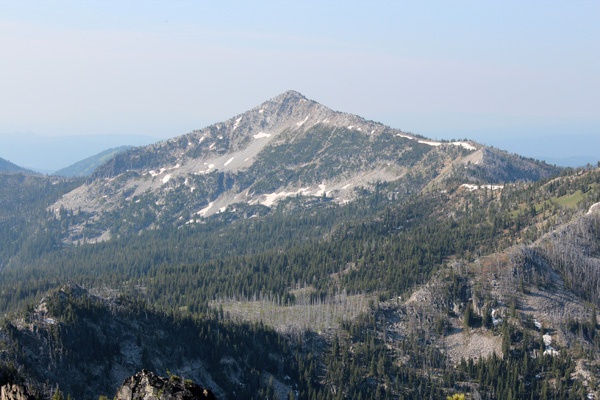
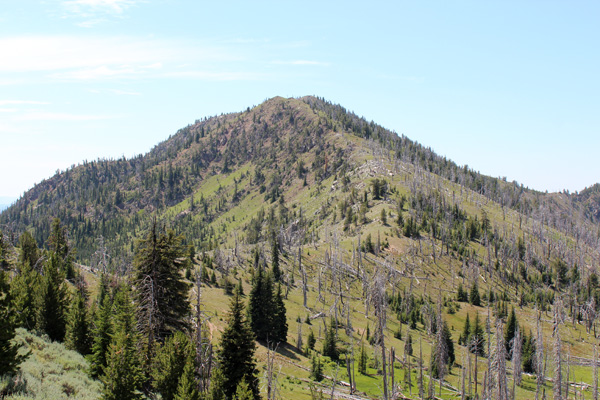
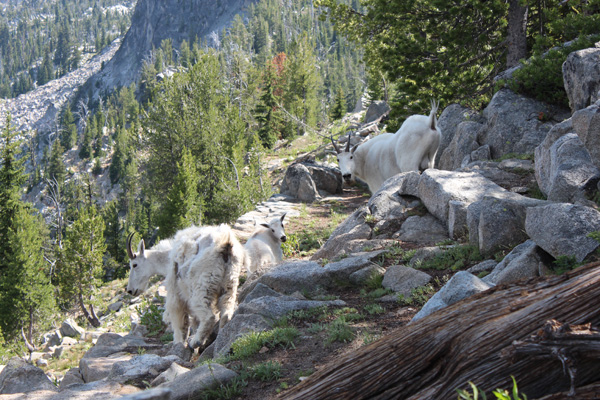
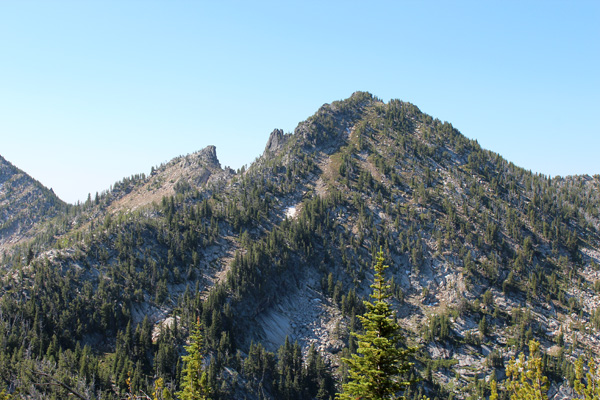
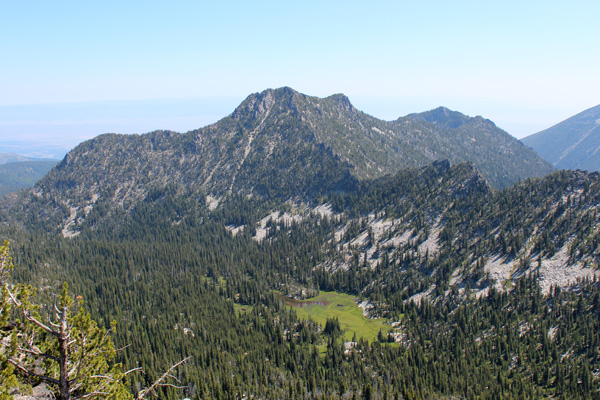

Leave a Reply